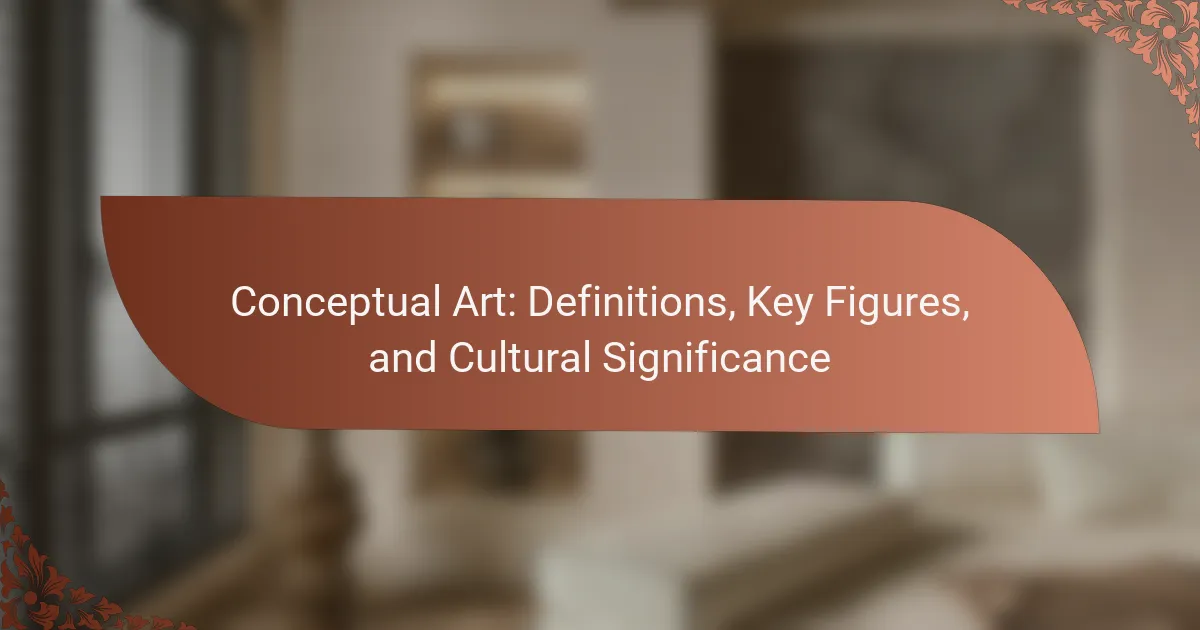Conceptual art challenges traditional notions of artistic expression by prioritizing ideas over aesthetics. This article explores its key figures, including Marcel Duchamp and Sol LeWitt, and highlights notable artworks that exemplify the movement. Additionally, it examines the cultural significance of conceptual art today and offers insights for emerging artists navigating this innovative landscape.
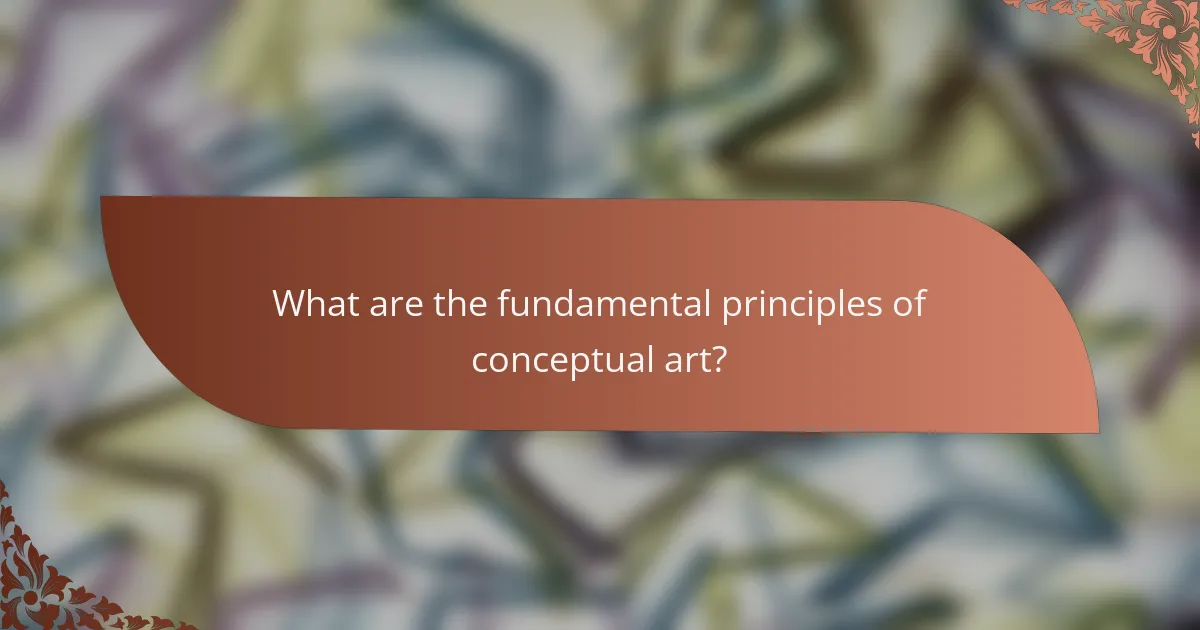
What are the fundamental principles of conceptual art?
Conceptual art emphasizes ideas over aesthetic value, challenging traditional art forms. It often involves the viewer’s interpretation and can include various media. Key figures include Marcel Duchamp and Sol LeWitt, whose works highlight the significance of concepts in art. This movement has influenced contemporary art, encouraging critical thinking and dialogue about artistic expression.
How does conceptual art differ from traditional art forms?
Conceptual art emphasizes ideas over traditional artistic techniques, focusing on the concept rather than aesthetic value. Unlike traditional art forms, which prioritize skill and visual appeal, conceptual art challenges viewers to engage intellectually with the work. Key figures like Marcel Duchamp and Sol LeWitt exemplify this shift, using unconventional materials and methods to provoke thought. The cultural significance of conceptual art lies in its ability to redefine art’s purpose, encouraging discussions about meaning, context, and the role of the artist in society.
What role does the idea play in conceptual art?
The idea plays a central role in conceptual art by prioritizing thought over aesthetic. It challenges traditional art forms, emphasizing the concept behind the work rather than its visual representation. This shift allows artists to explore complex themes, provoke thought, and engage viewers in new ways. Key figures like Marcel Duchamp and Sol LeWitt exemplify this approach, using ideas as the primary medium. Conceptual art’s cultural significance lies in its ability to question the nature of art itself and the role of the artist in society.
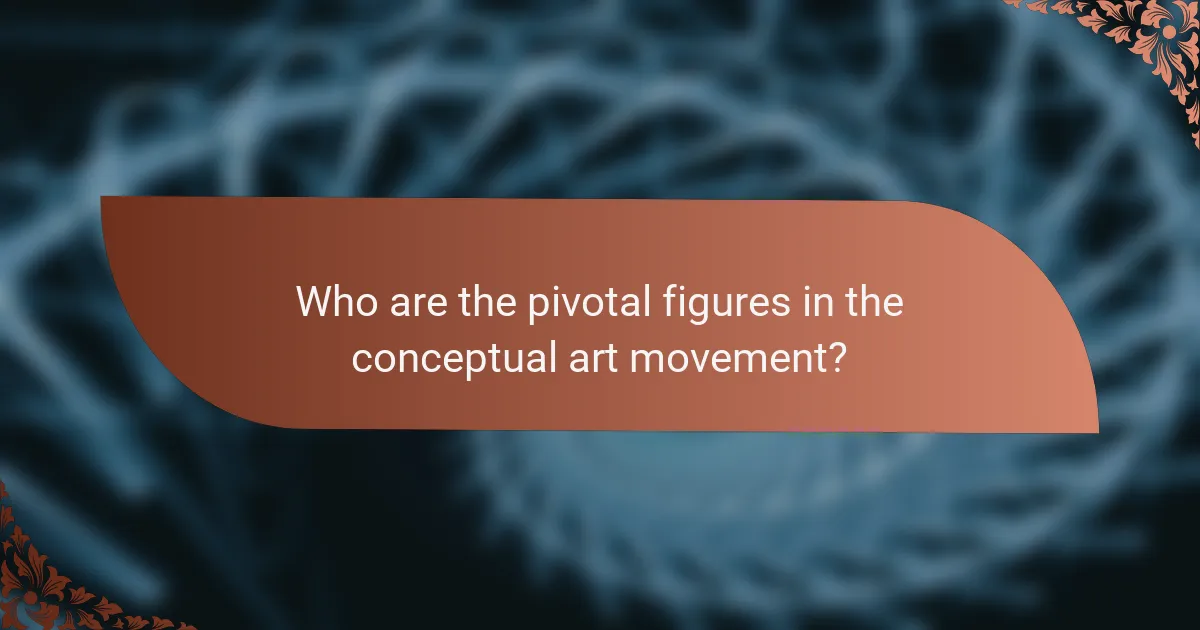
Who are the pivotal figures in the conceptual art movement?
Key figures in the conceptual art movement include Marcel Duchamp, Sol LeWitt, and Joseph Kosuth. Marcel Duchamp is known for challenging traditional art forms with his readymades, particularly “Fountain.” Sol LeWitt emphasized ideas over aesthetics, pioneering wall drawings that reflect conceptual principles. Joseph Kosuth explored the relationship between language and art, notably through his work “One and Three Chairs.” These artists significantly shaped the movement’s focus on ideas rather than visual representation, influencing contemporary art practices.
What contributions did Sol LeWitt make to conceptual art?
Sol LeWitt significantly shaped conceptual art through his innovative ideas and practices. He emphasized the concept over the finished artwork, which challenged traditional notions of art. His wall drawings and instructions for artworks encouraged viewers to engage with the creative process rather than just the final product. LeWitt’s belief that the artist’s idea is paramount influenced countless artists and movements, establishing a foundation for future conceptual practices. His work exemplifies the unique attribute of creating art that exists primarily as an idea, not merely as a physical object.
How did Joseph Kosuth influence the conceptual art landscape?
Joseph Kosuth significantly influenced the conceptual art landscape by emphasizing ideas over aesthetics. His work challenged traditional art forms, focusing on the concept behind the artwork as its essence. Kosuth’s installation “One and Three Chairs” exemplifies this approach, presenting a physical chair, a photograph of the chair, and a dictionary definition of the word “chair.” This piece illustrates his belief that art should provoke thought rather than merely please the eye. By prioritizing intellectual engagement, Kosuth helped shape the discourse around art, positioning conceptualism as a pivotal movement in contemporary art history. His contributions have inspired countless artists to explore the relationship between language, meaning, and visual representation.
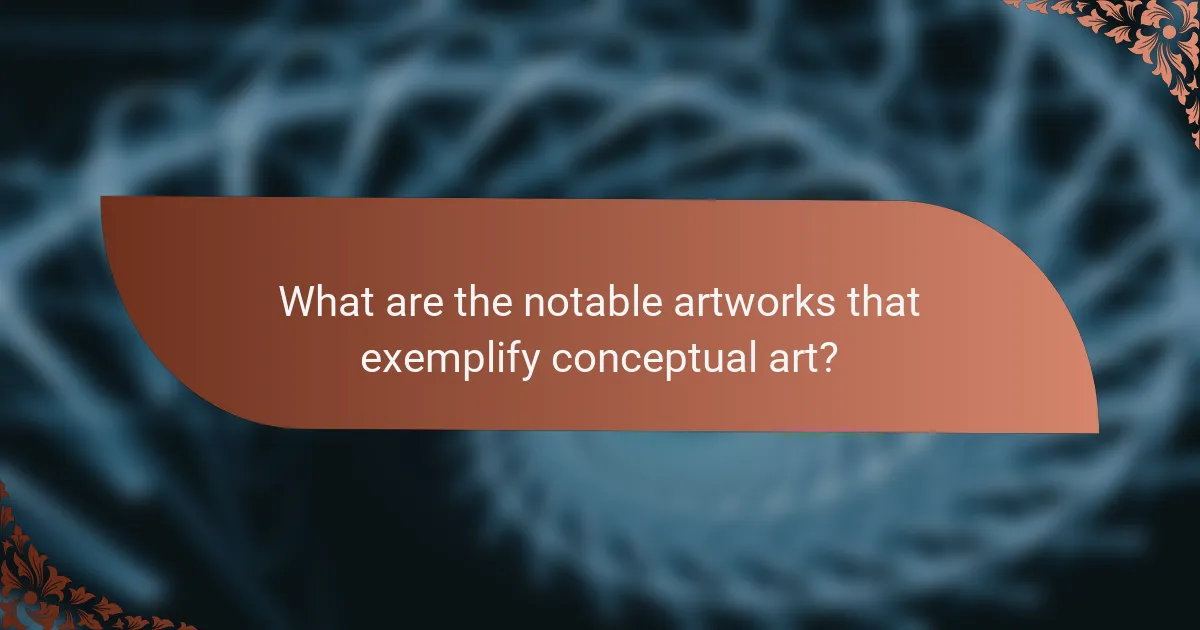
What are the notable artworks that exemplify conceptual art?
Notable artworks that exemplify conceptual art include Marcel Duchamp’s “Fountain,” Sol LeWitt’s “Wall Drawing,” and Yoko Ono’s “Cut Piece.” These pieces challenge traditional notions of art by prioritizing ideas over aesthetics. Duchamp’s “Fountain” redefined art through its provocative choice of an ordinary urinal. LeWitt’s work emphasizes the process of creation, showcasing the importance of instructions in art. Ono’s performance piece engages the audience directly, highlighting the role of interaction in conceptual art.
Which pieces challenge the boundaries of art and perception?
Conceptual art challenges the boundaries of art and perception by prioritizing ideas over traditional aesthetics. It invites viewers to engage with the underlying concepts rather than just the visual form. Key figures like Marcel Duchamp and Yoko Ono exemplify this shift, using everyday objects and participatory experiences to provoke thought. The cultural significance lies in its ability to redefine what art can be, encouraging discourse on meaning and interpretation.
How do installations and performances fit into conceptual art?
Installations and performances are integral to conceptual art as they embody ideas over traditional aesthetics. These forms emphasize the experience and engagement of the audience, transforming art into a participatory dialogue. Key figures like Marcel Duchamp and Yoko Ono utilized installations to challenge perceptions and provoke thought. This approach highlights the cultural significance of conceptual art, positioning it as a medium for exploration of social and political themes.
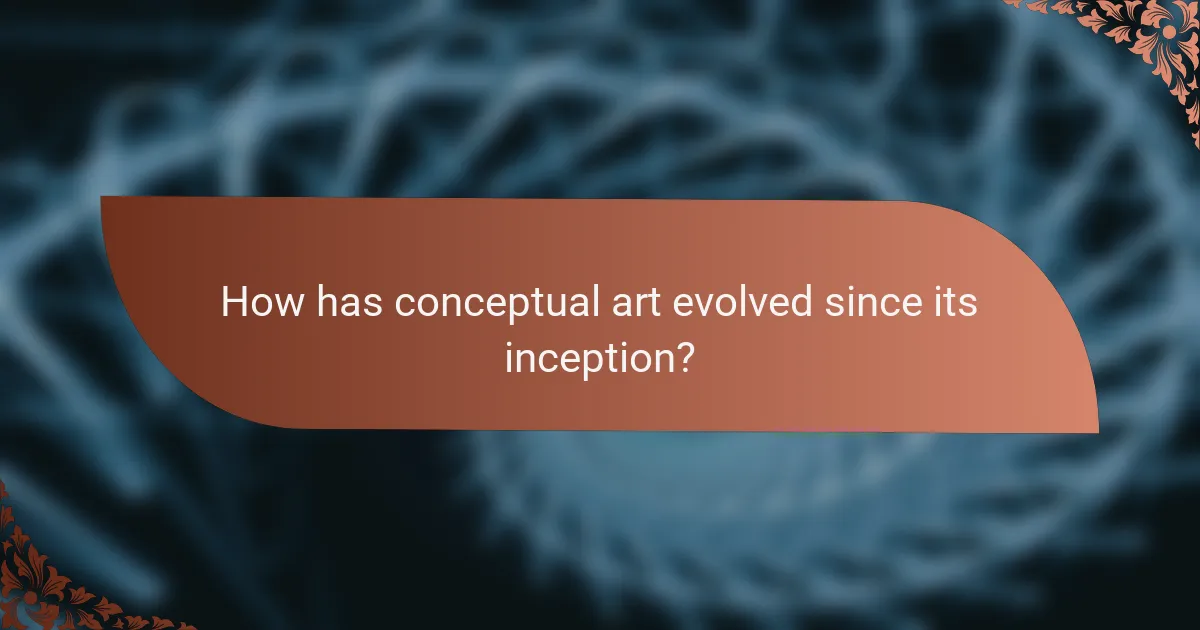
How has conceptual art evolved since its inception?
Conceptual art has evolved to prioritize ideas over traditional aesthetics, reshaping artistic expression. Initially emerging in the 1960s, it challenged norms through innovative practices. Key figures like Marcel Duchamp and Sol LeWitt emphasized the concept behind the artwork, influencing future generations. Today, conceptual art remains culturally significant, addressing social issues and engaging diverse audiences through various mediums.
What are the key movements and trends within conceptual art?
Key movements in conceptual art include the rise of Dadaism, the influence of Fluxus, and the development of Institutional Critique. Dadaism challenged traditional aesthetics, emphasizing absurdity and spontaneity. Fluxus blurred the lines between art and life, promoting participatory experiences. Institutional Critique questioned the role of art institutions and the commodification of art. These movements shaped conceptual art’s evolution, emphasizing ideas over aesthetics. The cultural significance lies in its challenge to conventional definitions of art, encouraging viewers to engage critically with the creative process.
How does contemporary conceptual art reflect societal issues?
Contemporary conceptual art often critiques societal issues, reflecting themes like identity, politics, and environment. Artists utilize diverse mediums to challenge perceptions and provoke dialogue. For instance, works addressing climate change raise awareness through innovative installations. This art form serves as a mirror, revealing societal tensions and encouraging reflection and action.
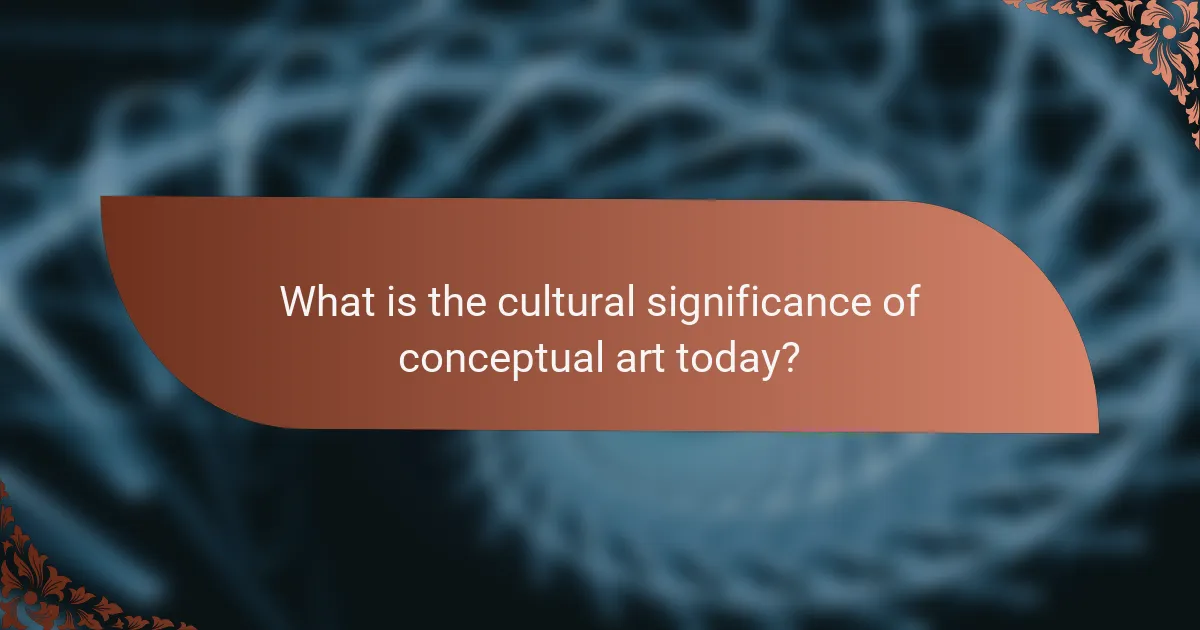
What is the cultural significance of conceptual art today?
Conceptual art holds significant cultural relevance today as it challenges traditional art forms and encourages critical thinking. This genre promotes dialogue about societal issues, identity, and the nature of art itself. Key figures like Marcel Duchamp and Sol LeWitt have shaped its evolution, emphasizing ideas over aesthetics. As a result, conceptual art continues to inspire new generations, fostering innovation and diverse perspectives in contemporary culture.
How does conceptual art engage with political and social themes?
Conceptual art engages with political and social themes by challenging traditional notions of art and provoking critical discourse. Artists use their works to comment on societal issues, often incorporating elements of irony and satire. For instance, works by artists like Banksy and Ai Weiwei highlight themes of power, identity, and resistance. This engagement fosters public awareness and encourages dialogue about pressing social concerns, making art a vehicle for activism and change.
What impact does conceptual art have on public discourse?
Conceptual art significantly influences public discourse by challenging perceptions and provoking critical dialogue. It encourages viewers to question societal norms and engage with complex ideas. This art form often addresses pressing social issues, fostering awareness and discussion. Key figures like Marcel Duchamp and Yoko Ono have used conceptual art to stimulate conversations about identity, politics, and culture. As a result, conceptual art serves as a catalyst for change, pushing boundaries and inspiring new perspectives.
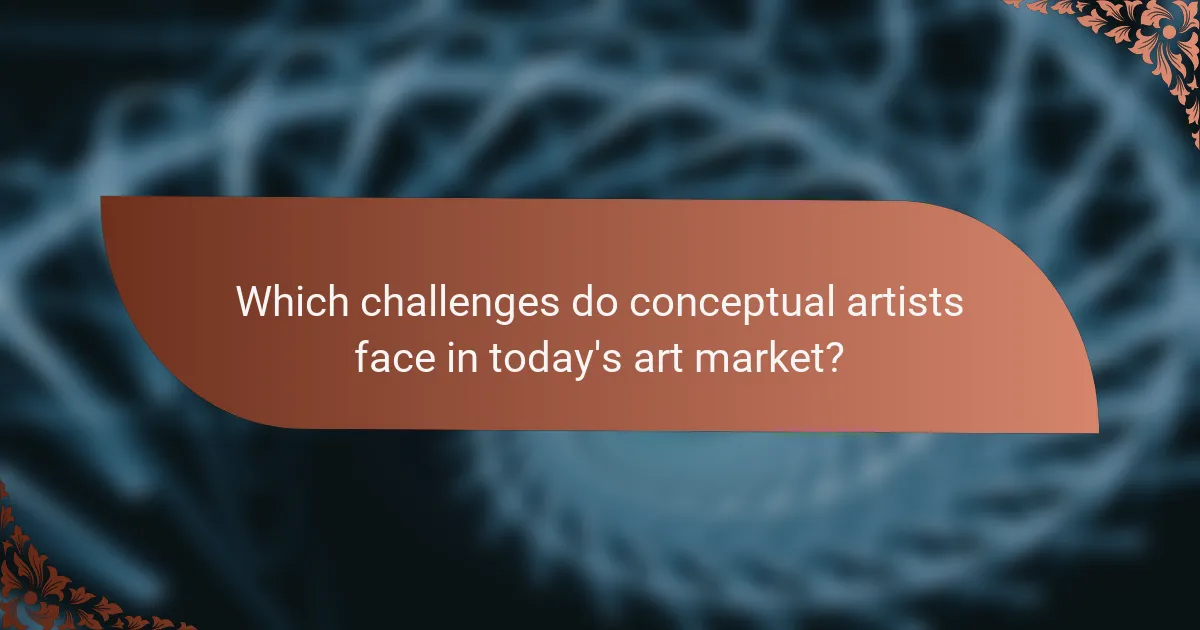
Which challenges do conceptual artists face in today’s art market?
Conceptual artists face challenges such as market saturation, lack of defined value, and evolving audience expectations. The art market often prioritizes traditional forms, making it difficult for conceptual works to gain recognition. Additionally, the reliance on intellectual engagement can alienate some collectors.
How do conceptual artists navigate commercialization?
Conceptual artists navigate commercialization by balancing creative integrity with market demands. They often engage in strategic collaborations and utilize social media to reach wider audiences. Many prioritize the authenticity of their work, focusing on ideas rather than profit. This approach allows them to maintain their unique perspectives while adapting to commercial pressures.
What are the common misconceptions about conceptual art?
Common misconceptions about conceptual art include the belief that it lacks skill, that it is purely about ideas without any aesthetic value, and that it is only accessible to a select few. Many think conceptual art is just a trend or that it cannot evoke emotions. Additionally, some people assume that all conceptual art is political or that it requires extensive knowledge to appreciate. These misconceptions often stem from a misunderstanding of the diverse forms and intentions behind conceptual art.
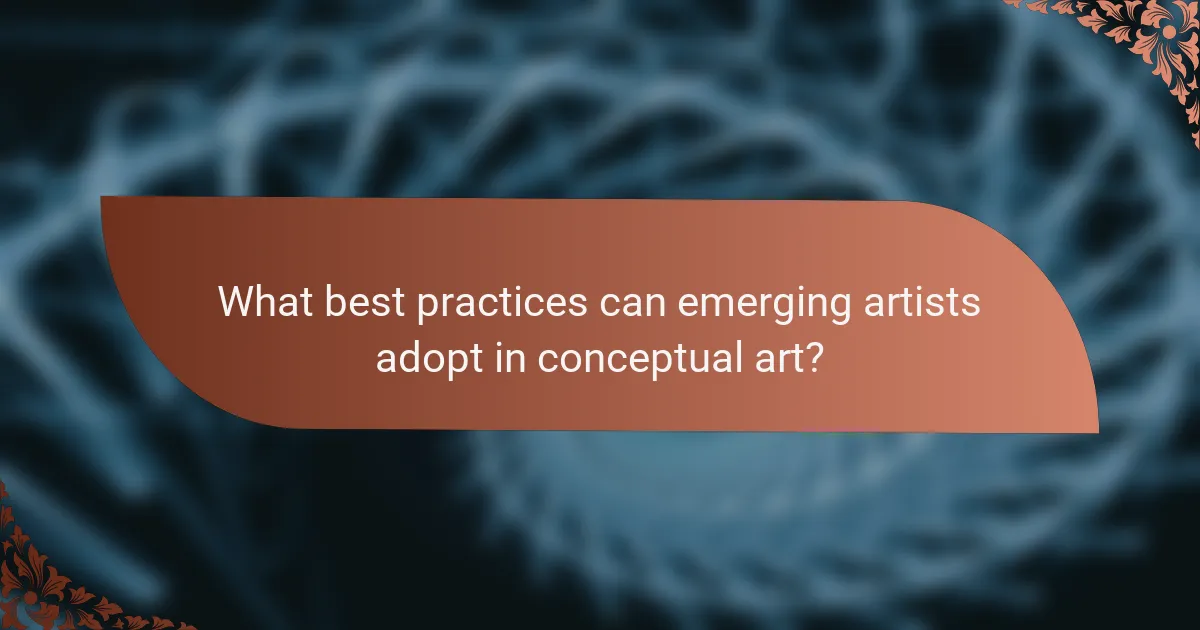
What best practices can emerging artists adopt in conceptual art?
Emerging artists in conceptual art should prioritize originality, engage with diverse mediums, and foster audience interaction. They can adopt these best practices to enhance their artistic expression and cultural impact.
1. Develop a unique voice by exploring personal experiences and perspectives.
2. Experiment with various materials and techniques to broaden artistic horizons.
3. Collaborate with other artists to gain new insights and ideas.
4. Engage the audience through interactive installations or participatory works.
5. Stay informed about contemporary issues to create relevant and thought-provoking art.
How can artists effectively communicate their ideas?
Artists can effectively communicate their ideas through clear conceptual frameworks, engaging visuals, and interactive experiences. Conceptual art emphasizes the idea over the medium, allowing artists to explore complex themes. Key figures like Marcel Duchamp and Yoko Ono transformed the art landscape by challenging traditional perceptions. Their work highlights the cultural significance of ideas, prompting audiences to reflect on societal issues and personal experiences. Engaging with viewers through dialogue and immersive installations enhances understanding and invites diverse interpretations.
What strategies enhance audience engagement with conceptual art?
To enhance audience engagement with conceptual art, utilize interactive experiences, foster discussions, and leverage digital platforms. Interactive installations invite participation, making the audience feel part of the art. Encouraging dialogue through workshops or Q&A sessions deepens understanding and connection. Digital platforms, such as social media, expand reach and create communities around the art, allowing for shared experiences and diverse interpretations.
